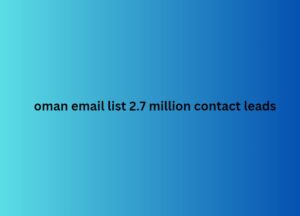B2B Fundamentals of purchasing processes are becoming increasingly complex. One of the characteristics of this is the growth of the average B2B buying committee, also known as Decision Making Unit (DMU).
The B2B buying committee in 2024 will typically consist of 6 to 10 people, and for deals over $100,000, the average number will be 14. One of the biggest challenges and most important responsibilities of the B2B marketer is mapping and understanding that buying committee. You ne to understand who is (will be) involv in the purchasing decision, what each person’s responsibilities are, and what the important ‘ buying factors ’ are for those involv.
Step 1: The organizational chart
The first step is to sketch out the organizational chart that is representative of the target group you are targeting. There are many different organizational structures possible. And the job titles and responsibilities are different for every organization, so this is certainly not an exact science. But if your ICP is specific enough, you will see that bas on the size of the companies you are targeting and the sector in which these companies operate, you will find quite a few recurring characteristics that are very useful.
The best way to approach this is to look at the 10 most recently won deals (in the target group segment you want to analyze). Depending on your objectives, you can also choose the 10 largest won deals or the 10 fastest won deals. If you do not look at the most recent deals, you run the risk that the situation has chang since the deal or that people involv are no longer employ there.
LinkIn Sales Navigator has a handy feature that allows you to easily map out an organizational structure with the employees that are relevant to you. When you view a company in Sales Navigator and scroll down, oman email list 2.7 million contact leads you will see the ‘Relationship map.’ With the drag and drop functionality, you can easily drag all relevant contacts to the right place.
relationship map linkin sales navigator
Step 2: Relevant stakeholders
Now it’s time to drill down into these deals and analyze who actually play a role in the buying process. Note who was involv, at what point in the sales cycle he/she was involv and in what form. And what his/her responsibilities were, important details about this person and his/her role. Start with:
all persons present at meetings
the people who were includ in the CC of email 5 event trends in 2025: conscious conferencing, consciously dealing with AI & more correspondence
anyone referr to during meetings (for example, the manager who nes to be approv for something)
the persons who sign the final contract.
Some important characteristics to note are the job title, alb directory seniority, level of involvement in the deal and the responsibilities they had around making the purchase, such as gathering information, comparing different providers or negotiating the price.
Now compare this list to the organizational chart and see who was involv. And, perhaps more importantly, who was not. Ask yourself the following questions.

